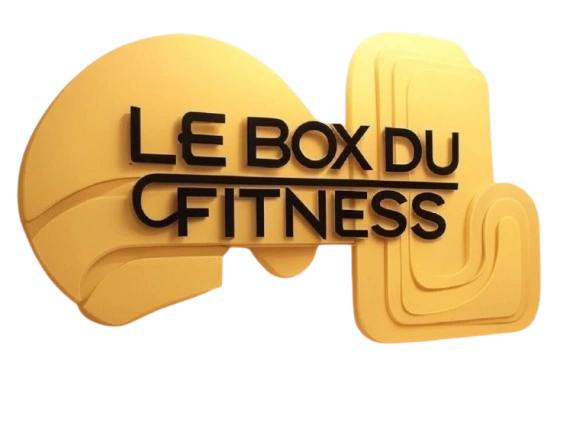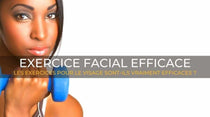Running for Bodybuilders
Bodybuilders hate running - for fear of injury and muscle loss.
Yet, when done properly, running is safe, natural and much more effective than other types of cardio.
"Their bodies are just not designed for it," he explains. "Bodybuilders are carrying 20, 25, 30 pounds of extra muscle, and that weight puts excessive wear and tear on their joints.
And anyone who has ever done bodybuilding knows that running burns muscle. I only know one bodybuilder who runs."
That ends the argument for running and bodybuilding - or not?
Can running be beneficial for someone who wants to burn fat, develop greater work capacity, or maybe do the occasional mud run, but without burning hard-earned muscle and putting joints at risk?
Some coaches, who are not experts in bodybuilding contest preparation, believe that those interested in muscle mass and hypertrophy can safely exploit running's proven prowess for fat burning, improved posture development, and overall functional fitness if they follow these tips:
Use the primitive form of running:
You can significantly reduce the impact of running and its risks to joints and connective tissues by learning "gentle" running.
This technique mimics the caveman style of barefoot running, in which you land softly on the forefoot with a bent, springy leg and avoid the traumatic heel strike that rattles your bones.
Perform periodic low heart rate training:
Keep your heart rate low, in an aerobic zone below the lactate threshold which primarily burns fat for fuel.
With a classic periodization program, you can slowly increase the pace and get faster over time, while maintaining the same heart rate and staying in the fat burning zone.
Do sprints:
Performed immediately after a leg workout, a short session of high-intensity intervals can spare joint stress, have an anabolic effect similar to strength training, and increase EPOC (excess post-exercise oxygen consumption) and additional calorie burning for up to 48 hours.
Before going into the details of these concepts, you may want to ask yourself the following question:
Why run when there are other, less risky aerobic options like cycling or the elliptical? The answer is simple: Nothing blasts fat like running, and nothing is as convenient, natural, and functional.
According to experts, a 200-pound man running at a snail's pace of 5 mph burns 755 calories per hour, nearly 50 percent more than rowing and swimming, and beats even high-impact aerobics, basketball and rollerblading.
If you go at a still-fun 6 mph pace, the calorie burn reaches 917 calories per hour. Only climbing stairs, at 819 calories, beats running at 5 mph.
Some say that no matter how fast you run, it has a positive effect on all functional movements in your body.
This is explained by the natural nature of running, evolution has given the human body an upright posture that allows it to see great distances in the savannah and to run, walk and stride long distances at fast speeds, probably to track down animals for dinner and flee from them when the situation presents itself.
Compared to our slower primate cousins, the human body has many features that are favorable to running, such as shorter arms that swing more quickly to balance the cyclical motion of the legs.
Lighter lower legs and thicker hips, which allow the leg to swing like a pendulum with little effort; larger and more complex feet, to absorb shock; and thicker lumbar vertebrae, also able to absorb shock forces.
Additionally, our muscles, tendons and connective tissues are designed like natural springs and slings that efficiently store energy during the gait cycle and then return it to you in the next step.
"So if you run - and if you run well - it not only promotes good posture, but in theory it helps you perform all human movements and training exercises a little more naturally, with greater economy of motion."
Running can help anyone get in touch with their inner caveman. "According to the bodybuilders who occasionally show up to my classes, I believe running helps them reconnect with a natural, primal grace.
A grace that their sport goes against." "Running is about moving your body weight from point A to point B with the least possible muscular effort.
But bodybuilders spend all their time in the gym doing the exact opposite: pushing their muscles as hard as possible. So they run very poorly at first.
Then, suddenly, when they learn to control gravity, they become visibly more flexible, more agile and more graceful.
"I imagine learning to do more with less effort would pay off in the gym, helping them move more weight."
Step 1: Use a joint-friendly form
Of course, whenever you're talking about running, the 400-kilo gorilla in the room is the size.
Big gorillas, whether their weight comes from muscle or fat, have a hard time running with all that weight. Not only does a big body quickly tire out trying to move its mass, but joint injuries are common, due to the snapping strides of an extra-heavy load.
This is why the first crucial step for a highly muscular runner is to stop the high impact of strides. To do this, you need to adopt a "gentle" running gait that is gentle on the joints and tendons and takes advantage of the body's natural springs.
Just like the Similar Pose method of famous Russian author and triathlon coach Nicholas Romanov, reduces the impact and turns the leg into a big spring that propels you forward.
These two running methods, widely adopted over the past decade by runners concerned about recurring injuries, can be explained simply:
They primarily copy the landing, leg position and gait cycle of barefoot running.
So while learning the Chi/Pose method may seem difficult, a quick shortcut is to take off your shoes and run barefoot for 15 meters.
Without the heel cushion of a running shoe to protect you, you'll notice several things:
- No heel strike: Your heel should not be the first thing to hit the ground, as this will hurt.
- Forefoot/Midfoot Touchdown: You land on the forefoot and/or midfoot. Your heel will land immediately afterward.
- Bent Knee: You will land with your knee bent, not straight. A straight leg landing and heel strike is possible with cushioned shoes, but not barefoot.
- Short strides: You will land with your foot almost directly under your body, rather than a foot or two ahead, as you might do with shoes.
If you can remember these four things when you put your shoes back on, you will run "smoothly." It won't be easy to remember and coordinate these four elements because the heel strike is so ingrained in many people's running habits.
Decades ago, shoe manufacturers added large heel cushions to running shoes, assuming that this is how humans naturally pose.
The problem is, as you can see when you take your shoes off, the heel strike feels completely unnatural.
The conveniences of the modern world have made us forget how to run naturally.
Now, one last thing:
A rapid rotation of 180 steps per minute:
As you learn the new form, you also need to increase your cadence (number of steps) to maintain your speed with the reduced stride length.
Fast cadence reduces the risk of injury because you only get injured when your foot is on the ground. So, immediately after your heel hits the ground (after the forefoot lands), lift it into the air.
Aim for a cadence of 180 steps per minute – 90 with each foot. It will be a little tiring at first, but you will quickly get used to it.
Once you learn the form and give your body time to gradually adapt to the new biomechanics (the calves and Achilles tendons, in particular, are shortened and weakened by years of heeling and wearing heels).
The reduction in impact forces on the ankle, knee and hip joints, and the decrease in the incidence of injuries to connective tissues and muscles will be profound. Some studies have shown that shocks are reduced by 50%.
Step 2: Learn how to burn fat while sparing muscle
The other downside of running is muscle loss.
It can be avoided by using two distinct running methods:
Long Slow Distance (LSD) and Interval Training.
Slow long distance running:
Twice a week, ideally on days when you're not in the gym, go for an easy run for 30 to 60 minutes.
The concept of low heart rate running is nothing new to bodybuilders; it's the same slow 120-140 bpm cardio they've always done on the bike and on the stairs to burn fat.
In the desired low-effort aerobic zone, your body is going slowly enough to take in all the oxygen it needs to use fat as its primary fuel.
Fats are calorie dense but require a lot of oxygen to burn. The key is to not exceed this heart rate range while running, which is not easy for most people to do, especially at first.
Running naturally makes you want to push yourself, so you need to actively slow down.
The goal of running, or any form of cardio, is to train your muscles' mitochondria (the tiny intracellular engines where fuel is ignited and energy is created) to burn fat better.
It does this when you stay in the fat burning zone, but if you go beyond the upper limit of that zone (technically your "threshold," where you can't get enough oxygen in to keep up with your speed), it's not going to burn fat.
Your muscles will switch to faster-burning fuel:
Carbohydrates. Not only does this faster pace decrease fat utilization and slow the development of a fat-burning engine, it also puts a strain on your muscles and impairs your recovery.
Remember, you worked hard in the gym the day before; to best realize those gains, your cardio day should be all about recovery.
How do you make sure you're not running too fast?
Take the "talk test." At all times, make sure you can converse easily without getting out of breath.
To make sure you don't accidentally adopt a fast pace, wear a heart rate monitor. Then, as you talk, note your pulse and set the monitor to beep when you exceed it.
In addition to burning a lot of fat, LSD safely builds the infrastructure (tendons, ligaments, connective tissue) that allows your joints to withstand the stresses of running and gives you time to focus on good form.
Interval Training: Once a week, do short, intense interval sessions immediately after a leg workout.
Intervals (eight 10- to 30-second sprints on an incline treadmill, separated by a minute of slow recovery) become muscular extensions of your strength work, taking advantage of a principle called post-activation potentiation (PAP).
The hormonal response to all-out sprints, particularly testosterone, is similar to that of lifting.
Intervals are very time efficient: just 20 minutes for eight sprints and recoveries, including warm-up and cool-down.
But don't do them more than once a week, as they're hard on your joints. Minimize the pounding and maximize the effort by increasing the treadmill's height as well as its speed.
Training plan
Running is the cheapest and most convenient physical activity in the world.
It has a documented endorphin effect that tends to make people addicted to it - until they hurt themselves.
To avoid this addiction, view running as a complement to your strength training, not an end in itself.
The goal of running is to burn fat and speed up recovery, while having no impact on your waistline.
A logical training strategy to get muscular while maintaining recovery is to use easy LSD running (or any other type of cardio) the day after every hard training day.
So if you work upper body and lower body or front and back body on Monday/Tuesday and Thursday/Friday, Wednesday and Saturday are good days for a low intensity run.
The third run could take the form of a PAP interval session added to a heavy legs workout.
To maintain your height, don't run more than three days a week or for more than an hour at a time.
For those wishing to compete in running, a standard periodization plan would gradually increase speed and mileage over the two DSL days, with the interval session remaining unchanged.
We have spent a lot of time to offer you the most complete article about bodybuilders who jog, we hope you enjoyed learning about it. Do not hesitate to subscribe to the private club, you will also receive our complete book as a gift on the best way to structure your fitness training, you will receive an email in advance when an article appears on our site leboxdufitness.com
Also feel free to check out our store which offers the best fitness, bodybuilding and fitness equipment.
Did you like this article and it helped you to know if bodybuilders jog. Let me know in the comments if you already knew about these concepts and what is your experience on the subject.
If you want to find other Fitness and Well-being articles, take a look at the fitness shop review and best seller sections of the blog, you will find plenty of workouts and exercises to do at home.
And if you want to know more about sports nutrition (food supplement) to gain muscle or lose fat, do not hesitate to consult the fitness clothing collection .
You can download my complete fitness guide “ The essentials for a body in top shape ” for free and subscribe to our Facebook page and our Instagram account .
Thank you for reading, I am personally responding to the comment.
Looking forward to corresponding with you!

















